6 Essential Oils to Kill Bacteria: Harnessing Nature’s Power for a Healthier Home
In the quest for natural alternatives to chemical disinfectants, essential oils have emerged as powerful allies, rooted in ancient traditions and now validated by modern science for their effectiveness in killing bacteria. With their potent antimicrobial properties, these oils, extracted through methods like steam distillation or cold pressing, can effectively kill bacteria and viruses, offering a safer and more environmentally friendly approach to cleansing our living spaces.
This comprehensive guide delves into the science behind six essential oils renowned for their antibacterial prowess, exploring their practical applications and the compounds they contain that can destroy bacteria or inhibit their growth. Specifically focusing on essential oils to kill bacteria, we uncover how these natural substances can be integrated into daily routines for a healthier, cleaner environment.
Important Insights for Bacterial Protection using Essential Oils
Exploring the Diversity of Bacteria: Types and Characteristics

Bacteria are incredibly diverse microorganisms classified into various types based on their shapes, oxygen requirements, staining characteristics, and environmental habitats. Here’s a brief overview of the different types of bacteria:
Different Shapes of Bacteria
- Cocci: Spherical bacteria that can form chains, clusters, or pairs, involved in diseases like pneumonia and food poisoning.
- Bacilli: Rod-shaped bacteria that are found in a variety of environments, including soil and the human gut, and can cause conditions like anthrax and foodborne illnesses.
- Spirilla: Spiral-shaped bacteria that are rigid and can cause diseases such as rat-bite fever.
- Spirochetes: Flexible, spiral-shaped bacteria responsible for diseases like Lyme disease and syphilis.
- Vibrios: Comma-shaped bacteria known for causing cholera.
Gram-Positive vs Gram-Negative Bacteria
- Gram-Positive Bacteria: Have a thick peptidoglycan layer in their cell walls, making them stain purple, and include bacteria like Staphylococcus and Streptococcus.
- Gram-Negative Bacteria: Have a thin peptidoglycan layer and an outer membrane, staining pink or red, including E. coli and Salmonella.
Varying Oxygen Requirements
- Aerobes: Require oxygen to survive and include bacteria like Mycobacterium tuberculosis.
- Anaerobes: Do not require oxygen and can be found in environments like deep wounds; examples include Clostridium tetani.
- Facultative Anaerobes: Can live with or without oxygen, such as E. coli.
- Microaerophiles: Require lower levels of oxygen, like Helicobacter pylori.
- Aerotolerant Anaerobes: Do not use oxygen but are not harmed by it, such as some lactobacilli.
Different Ways Bacteria Metabolize
- Phototrophs: Use light as their energy source.
- Chemotrophs: Obtain energy from chemical compounds, which can be further divided into lithotrophs (using inorganic substances) and organotrophs (using organic compounds).
Bacteria Prefer Different Temperatures
- Psychrophiles: Prefer cold temperatures and are found in Arctic and Antarctic regions.
- Mesophiles: Thrive at moderate temperatures and include most bacteria that are pathogenic to humans.
- Thermophiles: Prefer hot temperatures, found in hot springs and compost heaps.
- Hyperthermophiles: Survive at extremely high temperatures, such as those found in hydrothermal vents.
Bacteria’s Habitat
Bacteria can inhabit a wide range of environments, from soil to water to extreme environments like hot springs and salt lakes. They play crucial roles in nutrient cycling, decomposition, and in some cases, causing diseases in humans, animals, and plants.
Pathogenicity in Bacteria
- Pathogenic Bacteria: Cause diseases in hosts, including humans, animals, and plants.
- Non-pathogenic Bacteria: Generally harmless and often beneficial, contributing to processes like fermentation, decomposition, and nitrogen fixation.
Unveiling the Antimicrobial Power of Essential Oils
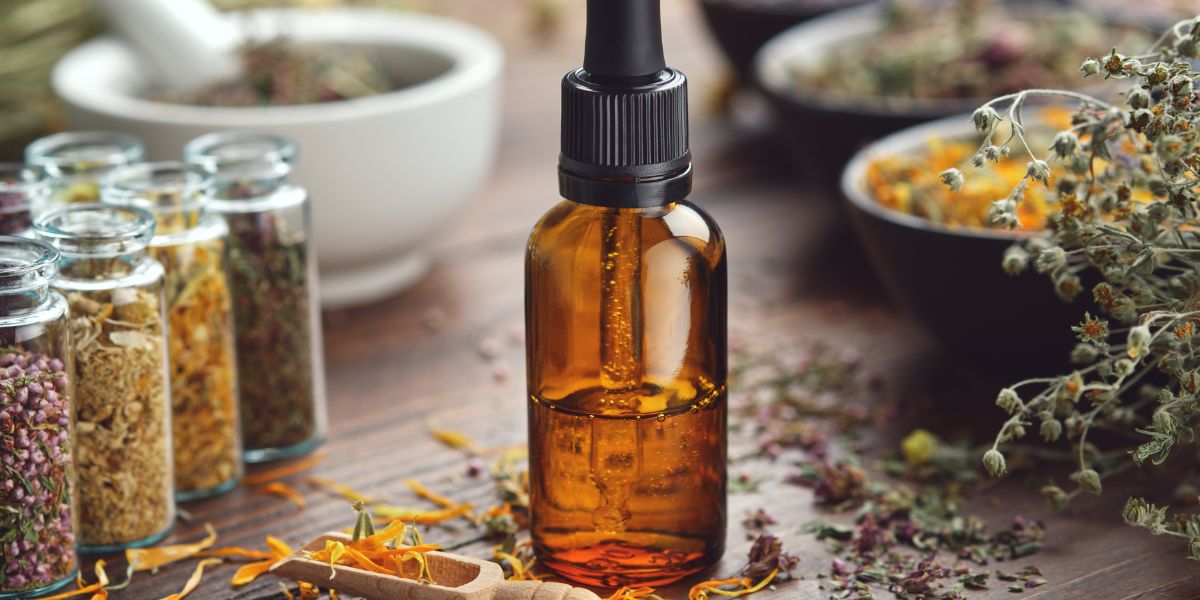
Antibacterial Properties of Essential Oils
Recent studies have systematically analyzed the antibacterial properties of essential oils, focusing on their chemical composition, revealing their mechanism of action and the spectrum of bacteria they can combat. For instance, research published in the Journal of Applied Microbiology demonstrates that tea tree oil, specifically its active ingredient terpinen-4-ol, disrupts the lipid bilayer of bacterial cell membranes, leading to cell death. This action is a direct result of its unique chemical composition. Similarly, thyme and oregano oils, thanks to their chemical composition including compounds like thymol and carvacrol, exhibit strong bactericidal activities against foodborne pathogens by interfering with their metabolic functions.
Antiviral Effects of Essential Oils
The antiviral potential of essential oils, such as eucalyptus oil and peppermint oil, is a relatively newer area of research, with promising results against viruses like the herpes simplex virus and respiratory syncytial virus (RSV). These findings highlight the broad-spectrum antimicrobial activity of essential oils, not limited to bacterial strains but also effective against viral pathogens.
A Scientific Analysis: Exploring the Wide-Spectrum Antimicrobial Activity of Essential Oils
The antimicrobial properties of essential oils underscore their capacity as potent tools in the fight against drug-resistant microbial infections. Essential oils, comprised of volatile organic compounds, have been extensively documented for their antimicrobial properties across various global studies. Their effectiveness against a broad spectrum of bacterial, fungal, and viral pathogens, including those resistant to conventional antibiotics as outlined in this study.1 Their mechanisms involve disrupting cell walls in fungi, damaging mitochondrial membranes, and compromising cellular integrity in bacteria, leading to energy production disruption and ion leakage.
Moreover, essential oils have demonstrated antiviral efficacy against a range of viruses, including herpes simplex, dengue, influenza, and poliovirus, among others. By destabilizing cellular structures and interfering with vital processes such as the electron transport system, these oils offer a promising natural alternative to traditional antimicrobials. This review succinctly covers the antimicrobial activities of selected essential oils below, highlighting their potential as powerful agents in combating drug-resistant bacterial strains.
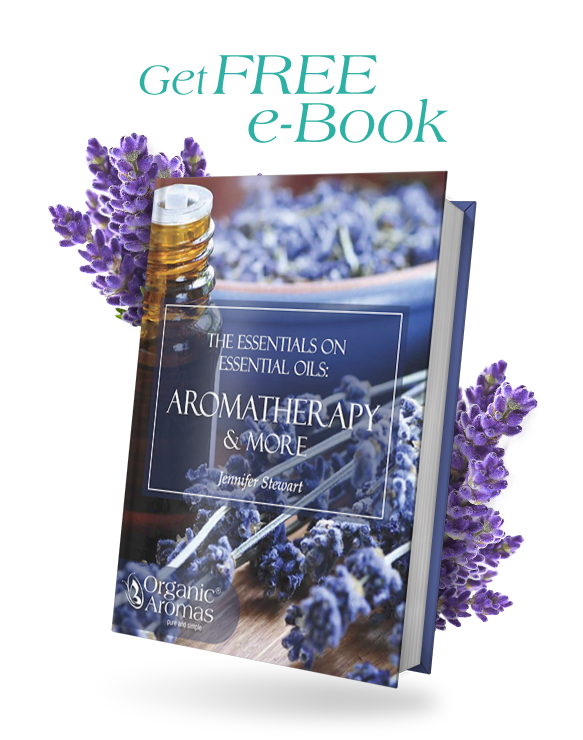
Sign Up to Get Your FREE
e-Book Here…
The Top 6 Essential Oils to Kill Bacteria
- Tea Tree Oil: The Mighty Protector
- Origin and Composition: Extracted from the leaves of the Melaleuca alternifolia, a plant native to Australia, tea tree essential oil is renowned for its potent antiseptic properties.
- Antibacterial Action: Discusses the mechanism by which tea tree essential oil disrupts bacterial cell membranes, leading to their destruction.
- Practical Uses: Offers recipes for homemade cleaning solutions and personal care products that harness tea tree oil’s antibacterial power.
- Lavender Oil: The Soothing Sentinel
- Origin and Composition: Distilled from the flowers of Lavandula angustifolia, lavender oil is celebrated for its calming scent and therapeutic benefits.
- Antibacterial Activity: Explores studies highlighting lavender oil’s effectiveness against a variety of bacterial strains, including those resistant to antibiotics.
- Practical Uses: Provides tips for incorporating lavender oil into daily routines for both its antibacterial and relaxation benefits.
- Eucalyptus Oil: Nature’s Breath of Fresh Air
- Origin and Composition: Derived from the leaves of the Eucalyptus globulus, this oil is a staple in traditional medicine for respiratory health.
- Antibacterial Efficacy: Examines eucalyptus oil’s role in fighting respiratory infections and its ability to purify the air.
- Practical Uses: Suggests ways to use eucalyptus oil in diffusers, homemade cleaners, and inhalation therapies.
- Peppermint Oil: The Cool Invigorator
- Origin and Composition: Peppermint oil, obtained from Mentha piperita, is known for its refreshing aroma and cooling effect.
- Antibacterial Potential: Reviews research on peppermint oil’s action against harmful bacteria, including its use in dental health.
- Practical Uses: Describes how to leverage peppermint oil for its antibacterial properties in home care and personal hygiene.
- Lemongrass Oil: The Zesty Guardian
- Origin and Composition: Extracted from the stalks and leaves of the Cymbopogon plant, lemongrass oil is famed for its invigorating scent.
- Antibacterial Power: Details the oil’s effectiveness in combating bacterial infections and its role in kitchen hygiene.
- Practical Uses: Outlines creative ways to incorporate lemongrass oil into cleaning routines and bug repellent formulas.
- Thyme Oil: The Potent Shield
- Origin and Composition: Sourced from the Thymus vulgaris plant, thyme oil has a history of use in medicinal and culinary applications.
- Antibacterial Strength: Highlights thyme oil’s broad-spectrum antibacterial properties, including its effectiveness against antibiotic-resistant strains.
- Practical Uses: Provides guidance on using thyme essential oils in household cleaning products and as a natural preservative.
Antibacterial Properties of Selected Essential Oils: Targeted Bacterial Strains and Active Compounds
| Bacterial Strain | Essential Oil | Active Compounds |
| Staphylococcus aureus, Escherichia coli, Candida albicans | Tea Tree | Terpinen-4-ol, γ-terpinene |
| Staphylococcus aureus, Escherichia coli, Pseudomonas aeruginosa | Lavender | Linalool, linalyl acetate |
| Klebsiella pneumoniae, Escherichia coli, Staphylococcus aureus | Eucalyptus | 1,8-cineole (eucalyptol), α-pinene |
| Escherichia coli, Staphylococcus aureus, Candida albicans | Lemongrass | Citral, geraniol |
| Staphylococcus aureus, Escherichia coli, Candida albicans | Thyme | Thymol, carvacrol |
| Escherichia coli, Listeria monocytogenes, Salmonella enterica | Peppermint | Menthol, menthone |
Other Essential Oils with Antibacterial Properties
While lavender, eucalyptus, peppermint, lemongrass, thyme, and tea tree essential oil are widely recognized for their antibacterial prowess, largely due to their unique chemical composition, the world of antimicrobial essential oils offers a treasure trove of alternatives that can further enhance your natural health and cleaning practices. Expanding your arsenal with the other essential oils, each with its own distinctive chemical composition, can provide broader protection against bacteria and germs, while also diversifying the scents and therapeutic benefits available to you.
Cinnamon Oil – A powerhouse in the fight against pathogens, cinnamon oil, especially derived from the bark, is celebrated for its broad-spectrum antibacterial and antimicrobial compounds. Its warm, comforting scent adds a cozy note to any blend, making it perfect for use in home cleaning solutions or as a part of your wellness routine.
Clove Oil – Renowned for its eugenol content, clove oil stands out as a potent antimicrobial agent. Its efficacy against a variety of bacteria and fungi makes it a valuable addition to DIY cleaning products and topical applications for skin health, enveloping you in its spicy, warming aroma.
Oregano Oil – Oregano essential oil, rich in phenolic compounds such as carvacrol, offers robust antibacterial and antiviral properties. The chemical compositions are responsible for its potent efficacy against a wide array of bacteria, including antibiotic-resistant strains. Also known as Origanum essential oil, this powerful oil, thanks to its high content of phenolic compounds, is effective in combating various pathogens, making it a must-have in your natural remedy toolkit.
Rosemary Oil – Not only does rosemary oil bring a fresh, herbaceous scent to the table, but it also possesses natural antimicrobial compounds and antiseptic qualities. It’s an excellent choice for purifying the air and surfaces in your home, promoting a cleaner, more invigorating environment.
Bergamot Oil – Bergamot oil, with its unique floral citrus fragrance, is not just a delight to the senses but also a formidable foe against bacteria. Its antibacterial properties make it especially useful in homemade skincare and cleaning products, offering a refreshing, clean aroma.
Grapefruit Oil – Known for its bright, uplifting scent, grapefruit oil is equally valued for its antimicrobial prowess. It’s particularly effective against foodborne pathogens, making it an excellent choice for kitchen cleaners or as a refreshing room spray.
Frankincense Oil – Revered since ancient times for its healing properties, frankincense oil brings a mystical, balsamic aroma along with its antibacterial benefits. It’s often used in skincare to promote healing and prevent infections, adding a touch of luxury to your routine.
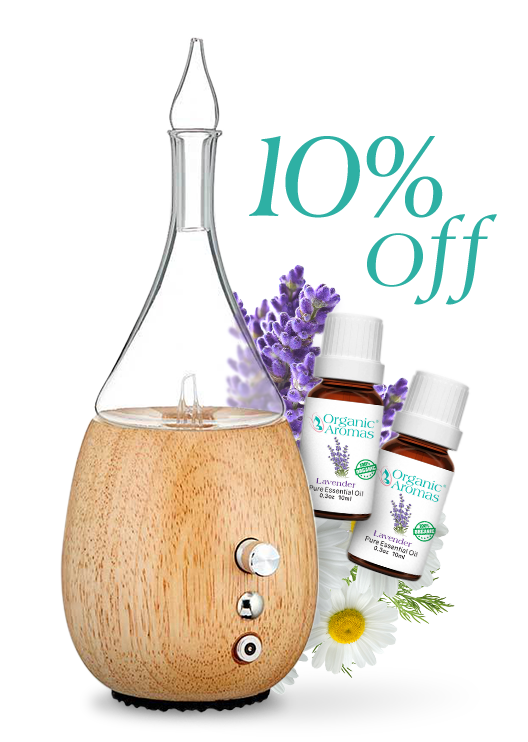
Join Now and Get a Coupon for %10 Off!
Maximizing Efficacy with Nebulizing Diffusers
Nebulizing diffusers stand out for their ability to disperse a potent dose of essential oils into the air without the need for heat or water, preserving the chemical composition and antimicrobial properties of the oils. This method achieves higher concentrations in the air, enhancing the antibacterial efficacy and improving indoor air quality. Add a few drops of tea tree oil or Burglars Blend to your Nebulizing Diffuser to improve indoor air quality in your home.
Antibacterial Essential Oil Blend Recipe
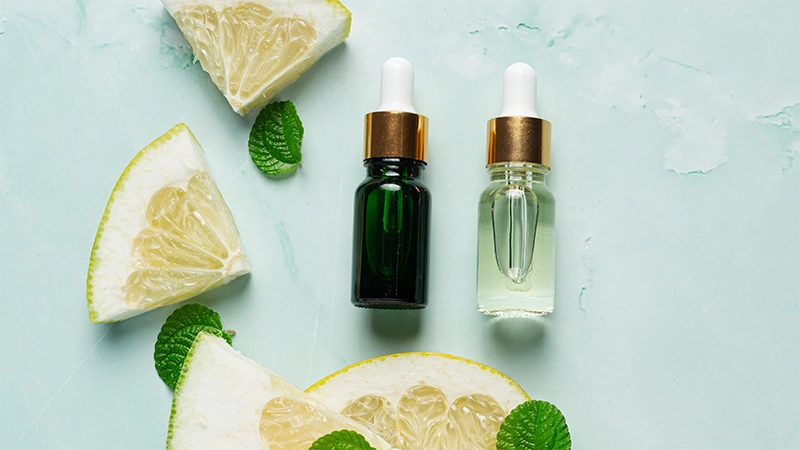
Here’s a simple, yet effective, antibacterial essential oil blend recipe. Remember, essential oils are potent, and they should be used with care. Always perform a patch test if you plan to use the blend on your skin, and dilute it properly with a carrier oil. For household uses, like cleaning surfaces, you can use the blend undiluted or add it to water, depending on the application.
Ingredients:
- Tea Tree Oil: 20 drops (known for its powerful antibacterial and antifungal properties)
- Lavender Oil: 20 drops (renowned for its antibacterial and calming effects)
- Lemon Oil: 15 drops (popular for its antibacterial, antiviral, and uplifting properties)
- Eucalyptus Oil: 15 drops (valued for its respiratory benefits and antibacterial properties)
- Peppermint Oil: 10 drops (appreciated for its antibacterial, antiviral, and invigorating properties)
- Clove Oil: 5 drops (noted for its potent antibacterial and antiseptic qualities)
Instructions:
- Gather Your Supplies: Ensure you have a clean, dark glass bottle to store your blend. Dark glass (amber or cobalt blue) helps protect the oils from light, preserving their therapeutic properties.
- Mix the Oils: Carefully add the specified drops of each essential oil to the bottle. It’s helpful to use a dropper to avoid spilling and to ensure accuracy.
- Blend Well: Once all the oils are in the bottle, secure the lid tightly. Gently roll the bottle between your hands to mix the oils thoroughly. Avoid shaking vigorously as it can introduce air bubbles.
- Label Your Blend: Make a label for your bottle, noting the ingredients and the date you made the blend. Essential oils should be used within a year for maximum efficacy.
- Store Properly: Keep your essential oil blend in a cool, dark place. Avoid exposure to direct sunlight, heat, and air as much as possible.

Other Ways to Improve Indoor Air Quality
While essential oils are a natural and fragrant way to combat bacteria, enhance the ambiance of your home, and improve indoor air quality, they are just one piece of the puzzle in the quest for cleaner indoor air. The quality of the air inside your home is influenced by a variety of factors, from the presence of pollutants and allergens to humidity levels and ventilation. Improving indoor air quality is crucial for maintaining a healthy living environment, reducing the risk of respiratory issues, and enhancing overall well-being. Here are several effective strategies to complement the use of essential oils and ensure your home is a sanctuary of clean air, further helping to improve indoor air quality:
Ensure Proper Ventilation – Proper ventilation is key to preventing the buildup of pollutants, moisture, stale air, and airborne bacteria inside your home. Make it a habit to open windows daily, even for a few minutes, to allow fresh air to circulate and dilute the concentration of airborne bacteria. Consider installing trickle vents to improve airflow and use exhaust fans in high-moisture areas like bathrooms and kitchens to expel pollutants, excess humidity, and airborne bacteria. This practice not only helps in maintaining a healthier indoor environment but also significantly reduces the risk associated with airborne bacteria and other pollutants.
Use Air Purifiers – Air purifiers can be highly effective in removing dust, pollen, smoke, and other particulate matter from the air, helping to improve indoor air quality significantly. For optimal results, choose a purifier with a HEPA filter, which can capture particles as small as 0.3 microns with 99.97% efficiency. Placing air purifiers in high-traffic areas and bedrooms can not only enhance the comfort and cleanliness of these spaces but also significantly improve indoor air quality, contributing to a healthier living environment.
Maintain Humidity Levels – Maintaining the right humidity level (ideally between 30-50%) helps prevent the growth of mold and dust mites, both of which can degrade air quality and trigger allergies. Use dehumidifiers in damp areas and humidifiers in dry spaces to keep humidity levels in check.
Keep It Clean – Regular cleaning is essential to reduce dust, pet dander, and other allergens, significantly improving indoor air quality. Use a vacuum cleaner with a HEPA filter to effectively capture fine particles without releasing them back into the air, which is crucial for maintaining good indoor air quality. Dust surfaces with a damp cloth to avoid scattering dust into the air, and wash bedding and curtains frequently to minimize allergens. These practices are key components in enhancing the indoor air quality of your home, making it a healthier environment for everyone.
Reduce Chemical Pollutants – Many household cleaning products, paints, and furnishings release volatile organic compounds (VOCs) that can be harmful to your health. Select natural or eco-friendly cleaning products, and be mindful of the materials you bring into your home. Look for low-VOC paints and finishes, and give new furniture and carpets time to off-gas before bringing them indoors.
Introduce Indoor Plants – Certain indoor plants can act as natural air purifiers, absorbing pollutants like benzene, formaldehyde, and trichloroethylene, thanks to their antimicrobial properties. Spider plants, snake plants, and peace lilies are among the most effective at cleaning the air and offering antimicrobial properties that contribute to a healthier indoor environment. Just be sure not to overwater them, as too much moisture can lead to mold growth, which counteracts their beneficial antimicrobial properties.
The Role of Essential Oils in Antibacterial Wound Care

In the realm of natural remedies, essential oils have garnered attention for their potential in supporting the healing process of cuts and abrasions, thanks to their antibacterial properties. While traditional medicine remains the cornerstone of wound care, incorporating essential oils as a complementary approach can offer additional benefits. This section explores how certain essential oils can be used in antibacterial wound care, emphasizing the importance of using them correctly and safely.
Understanding Essential Oils
Essential oils are concentrated plant extracts obtained through distillation or mechanical methods, such as cold pressing. They capture the plant’s scent, flavor, or “essence.” Rich in various compounds, these oils have been used historically in different cultures for medicinal and health purposes, including wound healing.
Safe Use of Essential Oils in Wound Care
While the antibacterial properties of essential oils can be beneficial, it’s crucial to use them correctly to avoid potential side effects, such as skin irritation or allergic reactions. Here are some safety tips for topical application:
- Dilution: For topical application essential oils should be diluted in a carrier oil (like coconut, olive, or almond oil) before application to the skin. A general guideline is to use a dilution rate of 1-2% for wound care, which translates to about 1-2 drops of essential oil per teaspoon of carrier oil.
- Patch Test: Before applying a new essential oil, conduct a patch test on a small area of skin to ensure there’s no allergic reaction.
- Consultation: It’s important to consult with a healthcare provider before using essential oils on open wounds, especially for individuals with pre-existing conditions, pregnant women, or children.
- Cleanliness: During topical application ensure the wound is cleaned properly before applying any essential oil mixture to prevent trapping bacterial infections under the oil.
Crafting an Antibacterial Household Cleaner with Essential Oils
In the quest for a healthier living environment, many are turning away from harsh chemical cleaners in favor of natural alternatives. Essential oils, including citrus oils with their potent antibacterial properties, stand out as effective and eco-friendly ingredients for homemade household cleaners. This section delves into how you can harness the power of essential oils, particularly citrus oils, to create a natural antibacterial cleaner, ensuring your home is not only clean but also infused with the uplifting and therapeutic scents of nature. Citrus oils, known for their refreshing aroma and strong cleaning capabilities, can add an extra layer of effectiveness and pleasant fragrance to your cleaning routine
The Power of Essential Oils in Cleaning
Essential oils, including the potent tea tree oil, are not just fragrant; they’re packed with compounds that can combat bacteria, fungi, and viruses. This makes them excellent allies in cleaning and disinfecting surfaces around the home. Tea tree oil, in particular, is renowned for its antimicrobial properties, making it a standout choice for homemade cleaners. When used in these natural cleaning solutions, tea tree oil provides a non-toxic way to maintain a hygienic environment, reducing the risk of health issues associated with both microbes and synthetic chemicals.
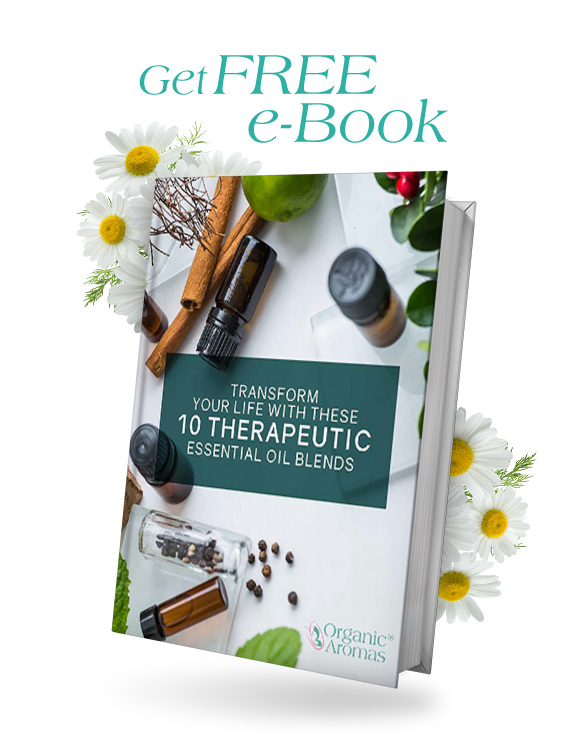
Sign Up to Get Your FREE Essential Oils e-Book Here
DIY Antibacterial Cleaner Recipe
Creating your own antibacterial cleaner is simple, cost-effective, and customizable. Here’s a basic recipe to get you started:
Ingredients:
- 1 cup of distilled water
- 1 cup of white vinegar (acts as a natural disinfectant)
- 20-30 drops of your chosen essential oils (use a single oil or a combination for added benefits)
Instructions:
- Combine the Ingredients: In a spray bottle, mix the distilled water and white vinegar. Add the essential oils of your choice. The vinegar acts as a disinfectant while the essential oils provide antibacterial properties and a pleasant aroma.
- Shake Well: Secure the lid on the spray bottle and shake well to ensure the ingredients are thoroughly mixed.
- Label Your Cleaner: Label the bottle with the contents and date so you know what’s inside and how fresh it is.
- Usage: Spray directly onto surfaces and wipe clean with a cloth or sponge. For tougher grime, let the solution sit for a few minutes before wiping.
Safety and Storage
While natural, essential oils are potent and should be handled with care. Always use gloves when cleaning with essential oil-based products to avoid skin irritation. Store your homemade cleaner out of reach of children and pets, and away from direct sunlight to preserve its efficacy.
Practical Applications and Safety
Incorporating these essential oils into daily routines for disinfecting surfaces, purifying the air, and personal care can significantly reduce the presence of pathogenic bacteria and improve human health. However, it’s crucial to follow safety guidelines, such as dilution rates and potential skin sensitivities, and to choose high-quality, pure essential oils for the most effective and safe use.
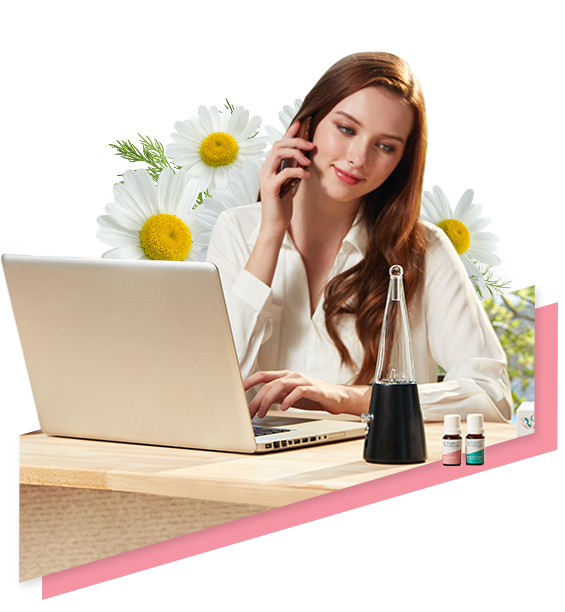
Join Our Exclusive Member Club to get Big Discounts!
Wrapping Things Up
Harnessing the antibacterial and antiviral power of essential oils offers a promising natural alternative to chemical disinfectants. By focusing on the six essential oils outlined above and utilizing nebulizing diffusers, individuals can effectively combat bacteria and viruses in their environments, contributing to healthier homes and a healthier planet.
Frequently Asked Questions (FAQs)
References
- Tariq, S., Wani, S., Rasool, W., Bhat, M., Prabhakar, A., Shalla, A., & Rather, M. (2019). A comprehensive review of the antibacterial, antifungal and antiviral potential of essential oils and their chemical constituents against drug-resistant microbial pathogens.. Microbial pathogenesis, 103580 . https://doi.org/10.1016/j.micpath.2019.103580.

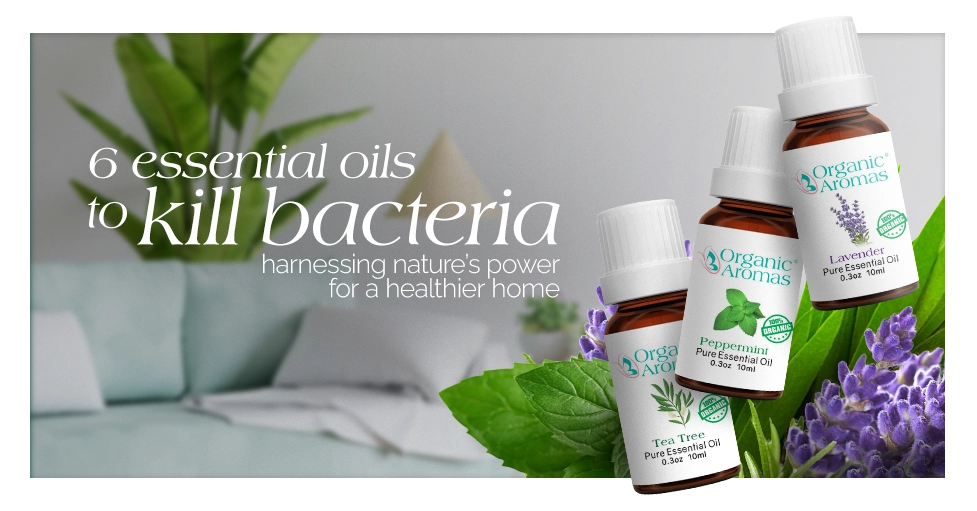

Very interesting.
Hello, I was wondering if you had any scientific proof that tea tree oil is antibacterial? I feel just saying it has antibacterial properties is pretty vague. Your article didn’t reference a paper or scientific study so how am I meant to know you didn’t just make all this up or are lacking in your own understanding of tea tree oil?
I want to get into diffusing essential oils but I am a skeptical person, please let me understand how you came to the conclusion that tea tree oil is antibacterial.
Thank you,
Selina
I like mixing eucalyptus & lemon oils together and diffusing them in my raindrop diffuser; or adding drops to
the nasal inhalers for on the go. It has a fall, open your mind, cleeean kinda smell… ? ~ (the raindrop infuser is incredible!)
Bree Harrison
I always diffuse tea tree oil and lemon and peppermint oils to clear the air in my home. Great article.